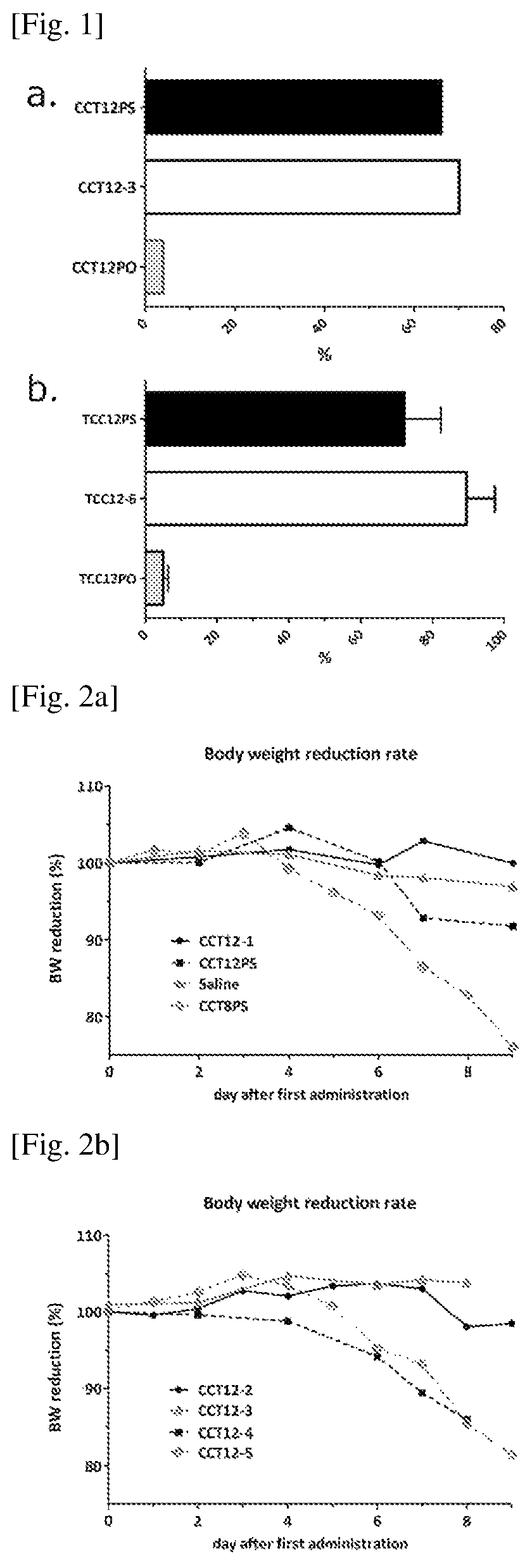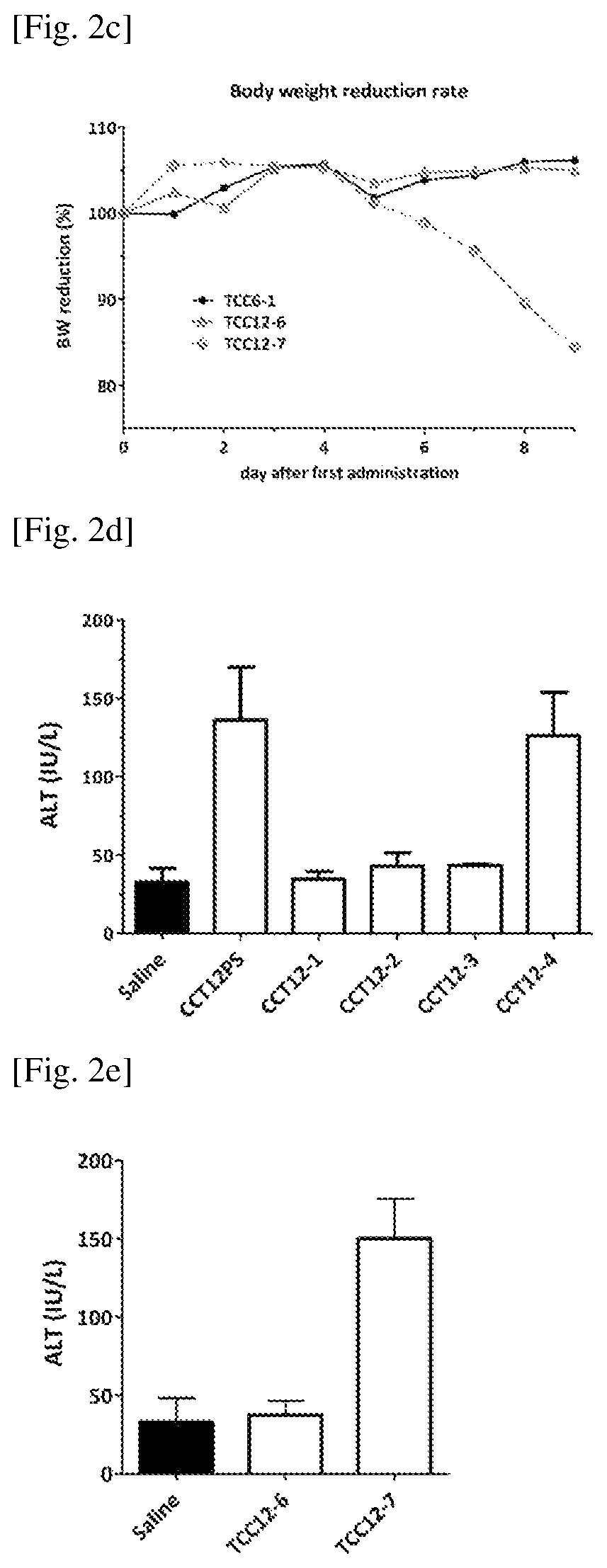TLR inhibitory oligonucleotides and their use
a technology of inhibitory oligonucleotides and oligonucleotide, which is applied in the field of oligonucleotides and remedies using the oligonucleotides, can solve the problems of excessive immune response to invaders, significant tissue damage or even death, and immunomodulatory disorders, and achieve safer formulation of pharmaceutical compositions, reduce toxicity, and increase the effect of efficacy
- Summary
- Abstract
- Description
- Claims
- Application Information
AI Technical Summary
Benefits of technology
Problems solved by technology
Method used
Image
Examples
example 1
[0185]Stability of partially phosphorothioated oligonucleotides compared with oligonucleotides with normal phosphodiester linkage or phosphorothioated oligonucleotides
Experimental Method
[0186]Oligonucleotides (10 ng / uL) were incubated in distilled water (DW) with 20% (v / v) of human sera (Cosmo Bio, Cat.12181201) at 37° C. The solution containing oligonucleotide was collected after 1 day incubation and examined for the concentration of remaining undegraded oligonucleotides. The concentration of oligonucleotides in the solution was determined by the hybridization assay using complementary oligonucleotide of (CCT)12 or (TCC)12 as a probe, which only detects the ones with full-length oligonucleotides with (CCT)12 or (TCC)12 sequence.
Experimental Result
[0187]FIG. 1 shows the ratio of remaining intact oligonucleotide after 1 day incubation in the serum-containing medium; the ratio is shown by % compared to the concentration of the oligonucleotide at the beginning of the study. As shown in...
example 2
[0188]In Vivo Toxicity Examination of the Oligonucleotide
Experimental Method
[0189]Oligonucleotides were dissolved in saline at 2 mg / ml and subcutaneously injected to mice (BALB / c) once every day at 100 uL / 10 g body weight, which makes 20 mg / kg (mpk) for 7 consecutive days. Mice were examined for the body weight to see if the oligonucleotides show any effect on the weight. In the figures from 2a to 2c, the X-axis denotes the days from the first dosing (i.e. Day 0 is the first day of dosing; Day 6 is the last day of dosing). The mean of the body weight (3 animals in each group) is shown on Y axis by the ratio from the beginning of the study set to 100%.
[0190]On the next day of the last dosing (Day 7), the blood collected from the mice was subjected to biochemistry analysis to see the effect on markers showing liver damage, such as Alanine transaminase (ALT). FIGS. 2d and 2e show the concentrations of blood ALT on the Y axis. ALT is commonly measured clinically as a part of a diagnosti...
example 3
[0196]Inhibition of NF-kB Transcriptional Activity
Experimental Method
[0197]CAL-1 / NF-kB-GFP cell line was established for monitoring the activity of NF-kB transcription factor in cell-based assays (WO2014 / 082254). Vector encoding the GFP reporter gene driven by the NF-kB consensus transcriptional response element was transfected into human plasmacytoid DC cell line; CAL-1 (human pDC cell lines, Maeda et al., Int J Hematol., 2005, 81, 148-54, JP5011520) by electroporation. Transfected cells were further selected with antibiotics. Then the CAL-1 / NF-kB-GFP cells (1×105 / well) were plated in 96-well flat-bottomed plate (Costar) and cultured with TLR agonists and with or without oligonucleotides of this invention. The cells were incubated at 37° C. in a 5% CO2 humidified incubator for 4 (TLR7 / 8) or 6 hours (TLR9). The change in NF-kB transcriptional activity was shown by the ratio of GFP-positive cells detected by flow cytometer (FACS Calibur, BD Bioscience Co., Ltd) as data from cells wit...
PUM
| Property | Measurement | Unit |
|---|---|---|
| chemical modification | aaaaa | aaaaa |
| pharmaceutical composition | aaaaa | aaaaa |
| molecular structures | aaaaa | aaaaa |
Abstract
Description
Claims
Application Information
 Login to View More
Login to View More - R&D
- Intellectual Property
- Life Sciences
- Materials
- Tech Scout
- Unparalleled Data Quality
- Higher Quality Content
- 60% Fewer Hallucinations
Browse by: Latest US Patents, China's latest patents, Technical Efficacy Thesaurus, Application Domain, Technology Topic, Popular Technical Reports.
© 2025 PatSnap. All rights reserved.Legal|Privacy policy|Modern Slavery Act Transparency Statement|Sitemap|About US| Contact US: help@patsnap.com



